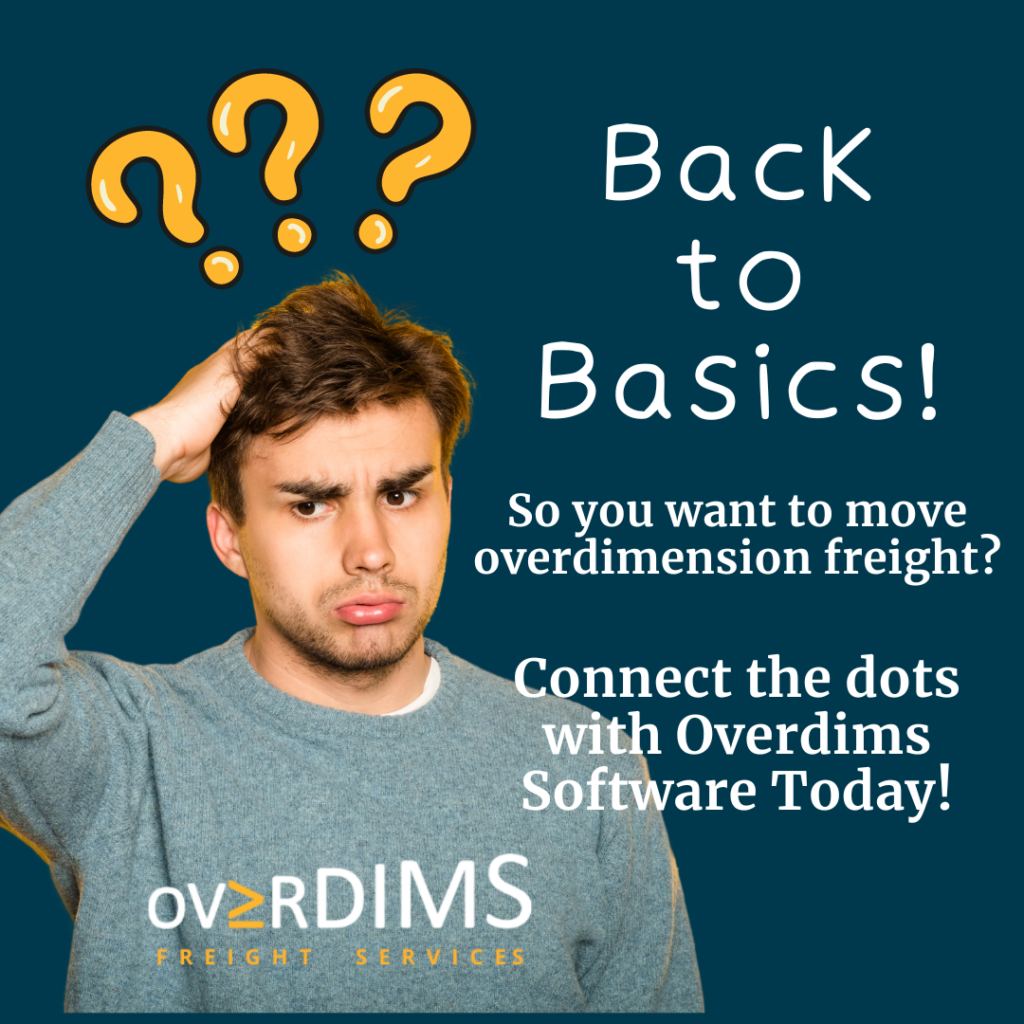The decision to move oversized or overweight freight can be a scary one, especially for those new to the industry. However, with the right knowledge and resources, it becomes much more manageable. In this blog post, we’ll cover all the basics of moving overdimension freight, from definitions to equipment requirements to tips, to help newcomers deal with the complex process of moving overdimension loads with confidence.
Let’s start with the definition of overdimension freight:- Overdimension freight refers to loads that exceed the standard size and weight limits set by the Department of Transportation (DOT) – today, the current measurements for standard loads are 53 ft in length, 13’6 ft in height, 8’6 in width and 80,000 lbs in weight. These loads may include large machinery, construction materials, mobile homes or other indivisible oversized or overweight cargo that do not fit the standard measurements.
To move overdimension freight, there are special types of equipment needed:
- Specialized Trailers: Moving overdimension freight requires specialized trailers designed to accommodate the size and weight of the cargo. These trailers may include flatbeds, lowboys, or extendable trailers to ensure safe and secure transportation.
- Permits: Transporting overdimension freight often requires permits from state and local authorities. These permits authorize the movement of oversized loads and specify the routes, restrictions, and conditions for transportation. Using a technology solution, such as Overdims Software can assist in getting the necessary permits and ensuring compliance with regulations, saving you over 2 hours and lots of hassle.
- Pilot Cars: In some cases, pilot cars or escort vehicles may be required to accompany oversized or overweight loads during transportation. These vehicles help ensure the safety of the cargo and other road users by providing advance warning and assistance during transit. Using the Overdims app, you will be able to identify what loads require pilot cars and how many are needed.
- Rigging Equipment: Depending on the nature of the cargo, rigging equipment such as chains, straps, and binders may be needed to secure the load properly onto the trailer and prevent shifting or damage during transit.
- Safety Equipment: Safety equipment such as reflective vests, warning flags, and flashing lights are essential for enhancing visibility and alerting other motorists to the presence of oversized loads on the road.
While planning your overdimension journey, some other things to consider include:
- Route Planning: Overdims’ experienced team of permit genies can assist in careful route planning to avoid low bridges, narrow roads, or other obstacles that may impede progress. Utilizing specialized routing software and consulting with Overdims’ professionals can help identify the most suitable routes for transportation.
- Compliance with Regulations: Using the Overdims App helps ensure compliance with state and local regulations governing the transportation of oversized loads, including getting the necessary permits, adhering to weight and size restrictions, and following designated routes, thereby avoiding fines, penalties, or delays.
- Communication: Effective communication between all parties involved in the transportation process is key to ensuring a smooth and successful delivery. Overdims permit experts facilitate seamless communication between you and the DOT state representatives to address any issues or concerns that may arise during transit.
In conclusion, moving overdimension freight requires careful planning, specialized equipment, and compliance with regulations to ensure safe and efficient transportation. By partnering with Overdims, you can streamline your operations, navigate the complexities of moving oversized loads, and achieve your transportation goals with confidence and success. Contact Overdims today to learn more about how we can support your overdimension freight needs.

